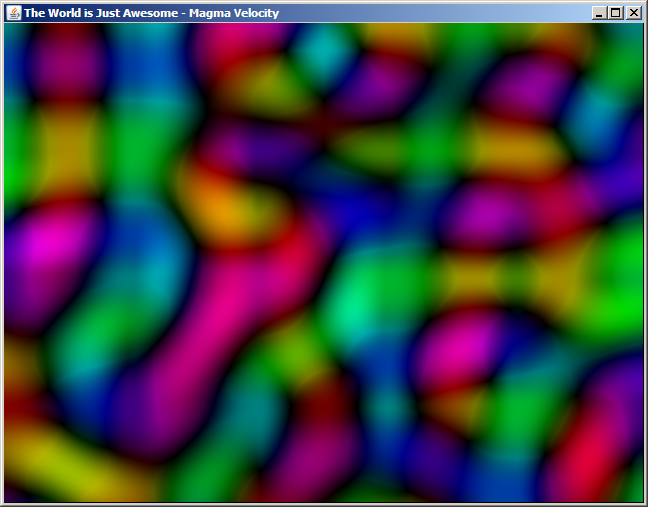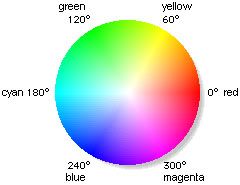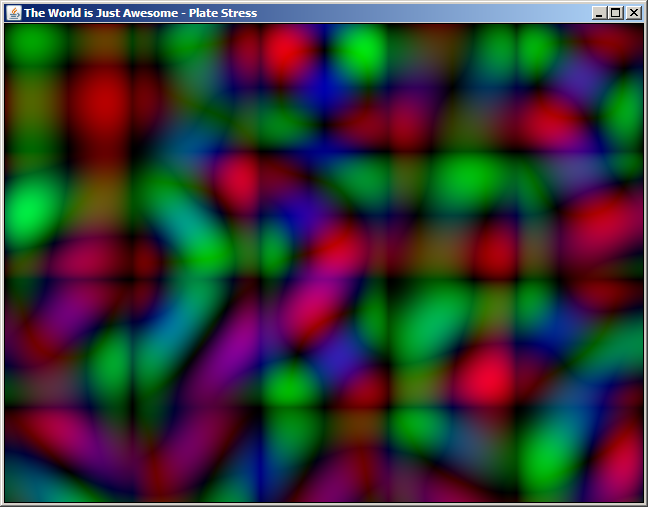Phase I - Plate Tectonics: Part 1
Plate Tectonics is more important to the generation of the world than you think. Not only does it create mountains and rifts, it drives nearly all crustal movement. Without it, our landscape would be flat and featureless. I will be implementing two main drivers behind plate tectonics: magma convection currents and plate density differences. Let's begin with magma convection currents.
Temperature differences in magma cause plumes of hot magma to rise in some locations, cool, then fall in other locations. This drives some movement of the crust above. It's not really known what specifically causes these temperature differences, so I'll start off with a simple perlin noise map of magma temperature:

I'm not going to establish a specific temperature scale just yet, but the yellow magma is hotter while the orange magma is cooler. Simple enough. Next, we need to actually establish the convection currents. We'll keep it simple for now, and keep magma velocity proportional to the temperature gradient. We end up with something looking like this:


The hue of the color represents the direction the magma is moving in, while the value (i.e. brightness) represents the speed of the magma. Use the color wheel below for reference. For example, a bright red spot represents magma quickly moving to the right, while a dark green spot represents magma moving slowly to the upper-left. Note that when the colors spin in the same direction as the color circle the magma is diverging, and when they spin in the opposite direction the magma is converging. You can match up these spots of convergence and divergence on the magma temperature map above.
Using this, we can begin to construct a map of the stresses on the plates above. These are only the stresses contributed by the magma convection; more stresses will be added once the plates actually begin moving. Another important thing to note is that the movement of the plates themselves can affect the magma convection current below. These effects will be implemented over the next few days. The current map of stresses generated by this static convection:

Red is compression stress (pushed in), green is tension stress (pulled apart), and blue is shear stress (pulled side-to-side). Put simplistically, compression creates mountains, while tension and shear creates rifts. Visual artifacts aside (I'm not quite sure what causes the blocks yet), already you can see some interesting terrain shaping up. These stresses will form the basis of the next step, actually breaking the crust into plates.

 Author
Topic: The World is Just Awesome - Advanced Terrain Generation Thread (Read 21578 times)
Author
Topic: The World is Just Awesome - Advanced Terrain Generation Thread (Read 21578 times)
